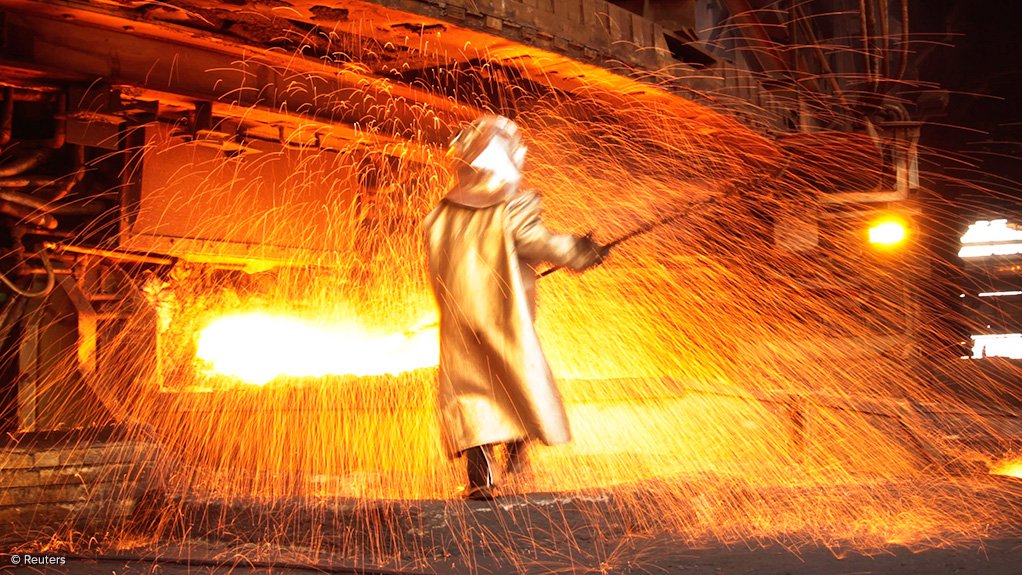VANCOUVER (miningweekly.com) – The price of nickel is expected to continue its upward momentum over the next four years to 2020 as mine closures are expected to slow market growth, while ambitious US spending plans will potentially boost demand.
Analysis by Fitch Group research arm BMI calls for a more bullish nickel price forecast following the election of Donald Trump as US President-elect, on the back of market speculation boosting prices because Trump's ambitious infrastructure spending plans will significantly boost global metal demand growth over the coming years.
Nickel prices have rallied by about 33% since the start of the year, from below $9 000/t to just shy of $12 000/t early last month.
BMI now expects nickel prices to average $10 500/t in 2017, moving up to $13 000/t by 2020, reflecting a modest recovery in general base metals prices owing to bullish investor sentiment despite the expectation that the nickel market will move into a surplus in 2017.
The US is the fourth-largest consumer of refined nickel, accounting for 7.5% of global consumption in 2014. More importantly, China's continued and intensified fiscal support for the construction sector will be the key driver of price gains. This is because nickel is used in the production of stainless steel, which is used widely in the transport and construction sectors.
“We have revised our nickel price forecasts over 2017 to 2020 higher owing to a more bullish outlook for industrial metals in general. This is only partially due to infrastructure development plans in the US touted by President-elect Donald Trump, as we expect these measures to disappoint over the coming years,” analysts stated.
More importantly, continued and intensified fiscal spending by the Chinese government on public infrastructure will buoy investor sentiment and keep prices elevated over the coming years despite only a modest improvement in nickel market fundamentals. “While we expect a slowdown in the Chinese construction industry over the years to 2020, transport infrastructure industry value as a percentage of total construction industry value will increase from 15.6% in 2015, to 18.8% by 2020,” BMI stated.
Further, vehicle production growth in China will also increase from 3.2% year-on-year to 5.6% year-on-year. Stainless steel is a key ingredient in the automotive industry as well as in the construction of modern bridges, airports and ports.
BMI expects the global nickel market will move into a surplus of 1 400 t in 2017, but the surplus will remain significantly smaller than the 178 000 t in 2013 when prices averaged $15 081/t. The global market surplus will increase marginally up to 2020 to reach 11 800 t as China's consumption growth is expected to slow over the coming years owing to the availability of cheaper nickel pig iron from smelters in Indonesia, which acts as a substitute to refined nickel.
Meanwhile, supply trends remain unchanged, with global production growth slowing over the years to 2020 (albeit still outstripping consumption) because of environmental regulations and historically weak prices.
TIGHTENING MARKET
Despite increased demand for nickel, low profitability owing to the combination of persistently low prices and higher costs may result in project closures over the next five years, according to research and consulting firm GlobalData.
The company’s latest report states that operating nickel mines scheduled for closure during the forecast period include the Savannah and Mount Keith mines, in Australia, the Cantilan nickel project, in the Philippines, and the Lac Des Iles mine, in Canada. These operations face declining margins and depleted reserves.
Global refined nickel consumption is set to grow from just under two-million tonnes in 2016, to 2.02-million tonnes by 2020, representing a compound annual growth rate (CAGR) of 1.3%, which is lower than the record CAGR of 5.23% from 2010 to 2015, according to GlobalData.
“Growth is supported by rises in the population and urbanisation in emerging economies such as China and India, which are expected to invest heavily in upgrading infrastructure and expanding industrial and output capacity. Current low LME prices in the nickel market will shut high-cost capacity in the short to medium term, and when warehouse stock begin to deteriorate prices will revert to growth,” GlobalData’s head of research and analysis for mining Cliff Smee stated.
GlobalData believes that high prices after 2020 will support the development of new projects, including the Araguaia project, in Brazil, the Mandiodo project, in Indonesia, the Wingellina and Hooneymoon Well projects, in Australia, the Platreef project, in South Africa, and the Voisey's Bay mine expansion and the Eagle's Nest projects, in Canada.
Edited by: Chanel de Bruyn
Creamer Media Senior Deputy Editor Online
EMAIL THIS ARTICLE SAVE THIS ARTICLE
To subscribe email subscriptions@creamermedia.co.za or click here
To advertise email advertising@creamermedia.co.za or click here













